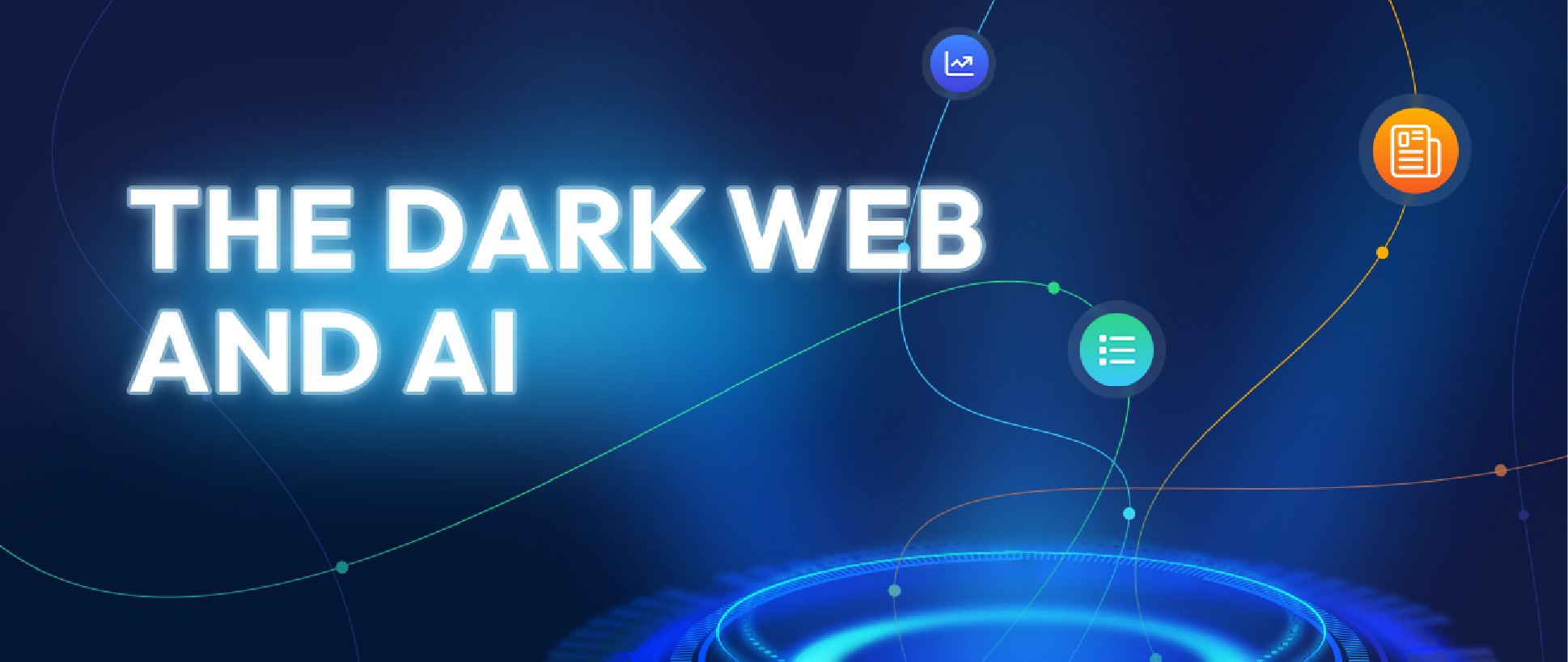The dark web now becoming more and more dangerous. As artificial intelligence comes to the dark web cybercrimes. Read this article to get all the details about the dark web and AI.
The Dark Web and AI
The generative AI lets cybercriminals execute attacks against users with personalized messages collected from data from social media accounts, open-source models, and online records. The open-source models such as LLAMA, LLAMA 2, and Vicuna allow malicious actors to bypass safety measures. Like RLHF – Reinforced learning with human feedback prevents the technologies from being used to harm others.
In the previous five years, there has been a big growth in cybercrime. Cybercriminals buy and sell credentials personal data, network access, data leaks, infected devices, attack infrastructure, ransomware, and more on the dark net that can be accessed via the TOR network.
The Current State of AI in the Dark Web
AI models on the darknet introduced a cybercrime ecosystem that is increasingly commoditized, efficient, and easy to access. The artificial intelligence models offer easy-to-use tech that allows cybercriminals to automate extra criminal activities and level up their current services. The open-source models having no restrictions and fine-tuned for cybercrime are available for purchase on the dark web. While business-oriented cybercriminals will use open-source AI language models more frequently. They offer Malware-as-a-Service (MaaS), Ransomware-as-a-Service (RaaS), and Phishing-as-a-Service (PaaS).
Here are the methods cybercriminals on the dark web use;
- Make better malware
- Weaponizing AI bases to hack
- Stealth attacks
- Generating deep fake data
- Deep exploits
- GANs: Generative adversarial networks
- CAPTCHA-cracking and AI-supported password-guessing
- ML-enabled penetration testing software
- Human impersonation on social media platforms
Popular Dark Web AI Models
Cybercriminals use the term GPT they most likely use an open-source model. They make these models as “GPT” because the term resonates with a bigger audience. Software like WormGPT, FraudGPT, DarkGPT, and DarkBard have already been created and are being sold for monthly and yearly access charges. Here is the available AI on the dark net used by the cybercriminals.
1. WormGPT
The programmer of WormGPT is from Portugal he made this tool when he was 23 years old. It is a subscription-based model selling for $500 per month. This dark web AI is known as one tuned on creating malware. This AI can help cybercriminals repeat their malicious code more professionally rather than program the process of generating complete software.
2. FraudGPT
Threat actors replicated the ChatGPT interface and tweaked the FraudGPT model. It helps to make spear-phishing emails used in business email compromise (BEC) and other fake activities. This tool can create risks when tied with PaaS infrastructures to create personalized emails at scale, lowering the cybercriminal barrier of entry. For instance, fraudsters who work in freelancing may have an idea of what they want to do, but they often hire people legitimately to take these strategies to execute. So FraudGPT lets the cybercriminals no longer require these freelance workers.
3. DarkGPT
DarkGPT emerges as a revolutionary AI-powered OSINT assistant. It is based on GPT-4-200K designed to operate without filters, providing unfiltered and exhaustive answers on leaked databases. It shows you dark uncensored, and taboo queries. The ability to make unfiltered content leads to hacking and misuse.
4. DarkBERT or DarkBART
Another AI chatbot DarkBERT or DarkBART supports threat actors with ChatGPT-like AI capabilities that go much further than existing cybercriminal GenAI offerings. This AI potentially lowers the wall of entry for wannabe cybercriminals to progress their cybercrimes. Including sophisticated business email compromise (BEC) phishing campaigns, finding and exploiting zero-day vulnerabilities, inquiry for dangerous infrastructure weaknesses, generating and distributing malware, and many more.
The Impact of AI on the Dark Net
The dark web is a free environment known for its operations remain largely anonymous. Right now there is an apparent increase in AI-related activities on the Dark Web network. Here we have shared the impacts AI makes on the dark net world.
- Enhanced Anonymity: AI taking the dark web anonymity to heights. Cybercriminals use AI to scrub traces of their identity from the web, hide their digital footprints, and encrypt their activities. The enhanced anonymity makes it difficult for law enforcement to track them.
- Cybersecurity Threats: people using AI for hacking on the dark web are using complex algorithms to get into networks and steal private data. It leads to Cybersecurity really at stake. Botnets with AI capabilities can robotically target network weaknesses.
- Enable Illegal Trades: AI algorithms are also used to know prices for illegal commodities or to examine consumer behavior on illegal platforms. It improves the efficiency of marketing campaigns for goods that are outlawed firearms and drugs.
- Making Fake Identities: on the dark web people start using AI to make identities to commit fraud. For example, Artificial intelligence software can edit images to make fake papers and deepfakes, etc.
- Child Exploitation: The demand for AI-generated photos connected to child sexual exploitation has also increased. These images are then sold on the dark web markets.
Closing Sentiments
Cybercriminals on the dark web world progressively use open source LLMs large language models like LLaMA and Orca. In this article, we have described the dark web and AI (Artificial intelligence) and the popular AI models used by cybercriminals on the dark web. Let us know what you think about increasing AI on the dark net.
